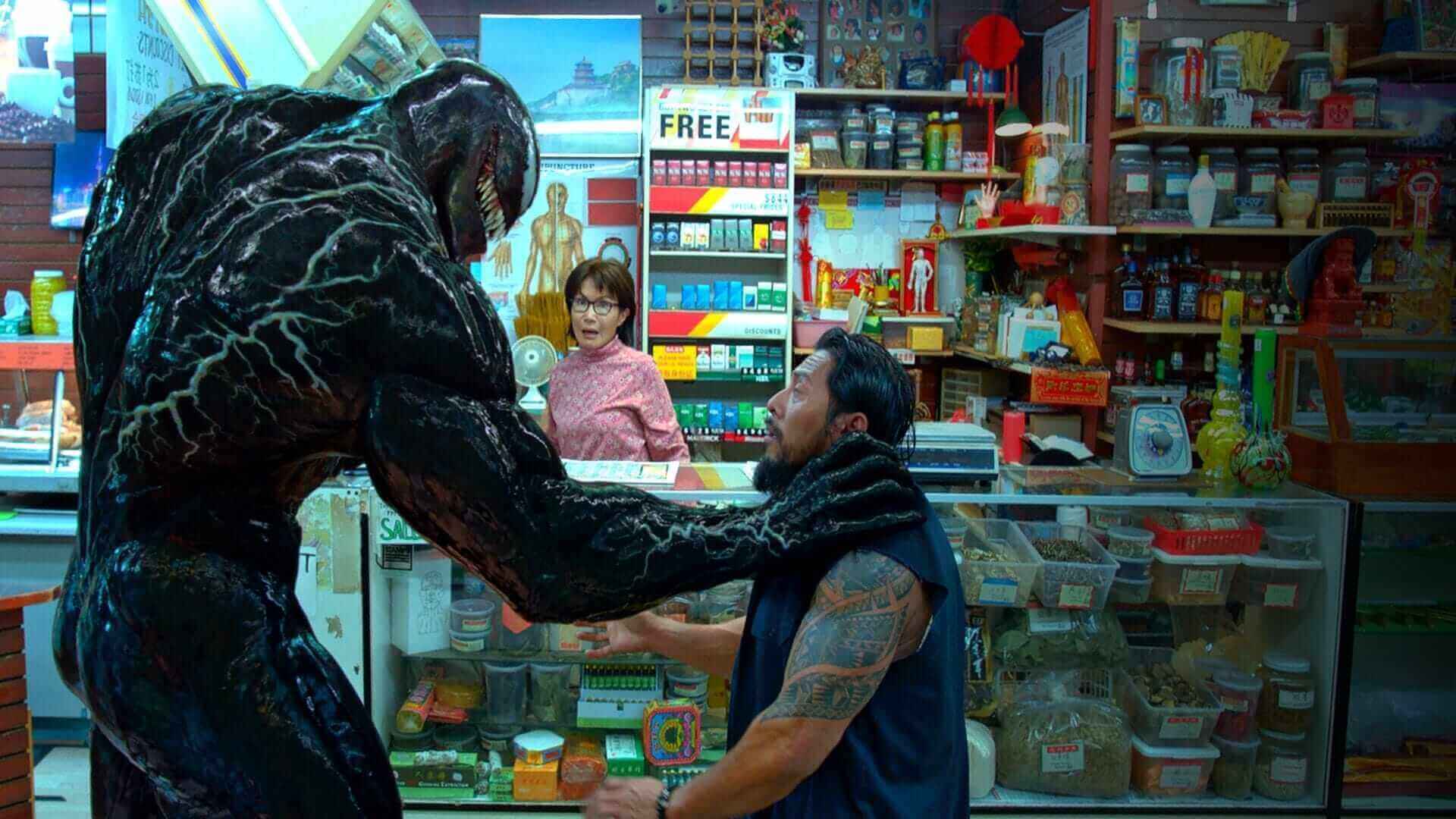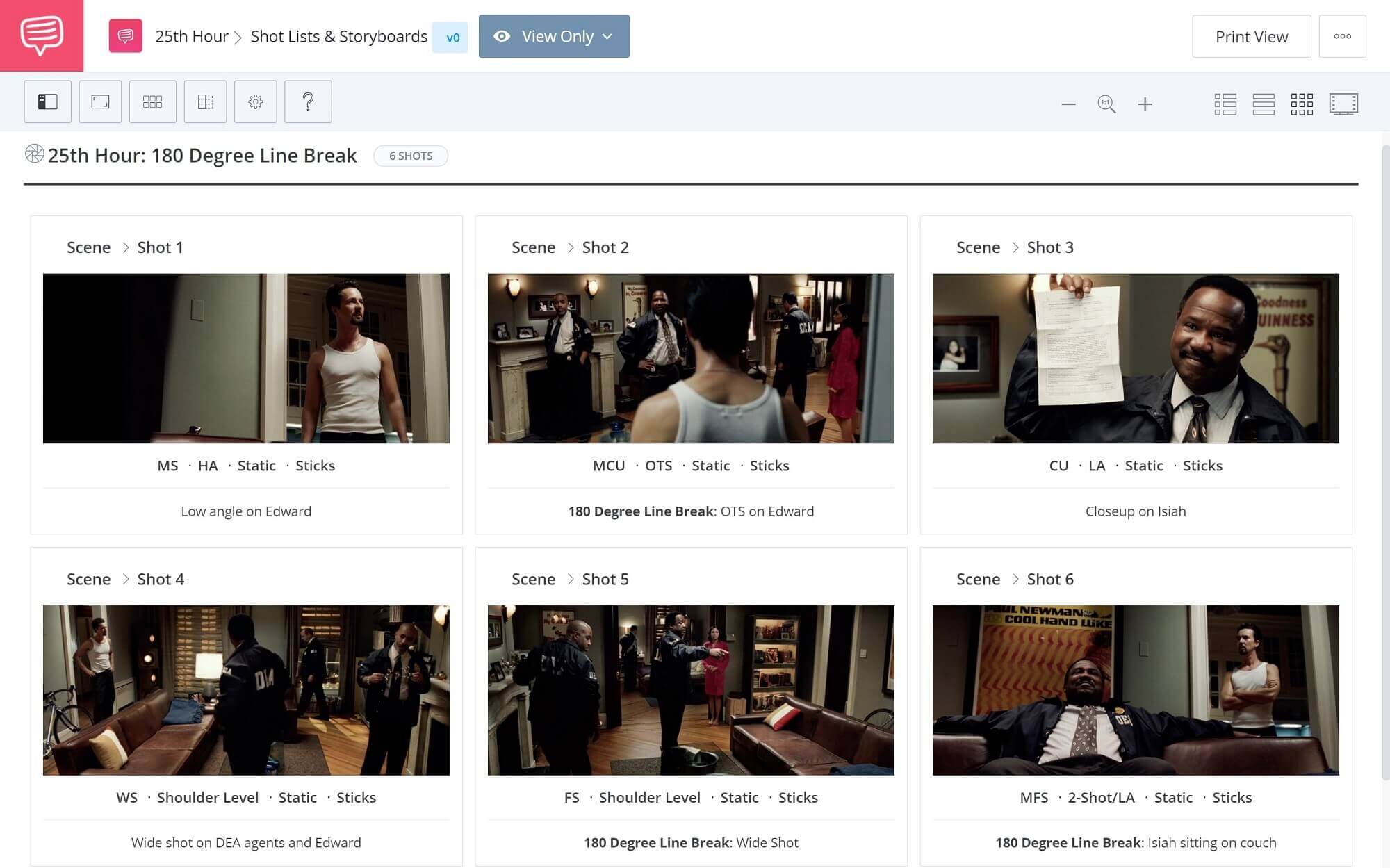If you’re a filmmaker of any kind, you need to know the rules of cinema and video production. Understanding these rules give you control over your images.
One of the most important rules to know is the 180 degree rule.
We’ve put together a guide that will teach you how to follow the 180 degree rule, as well as break and bend it so that you can cross the line confidently.
How to Follow & Break the 180 Degree Rule in Film
The 180 Degree rule
1. What is the 180 Degree Rule?
One of the first things taught in film school is the 180 degree line.
It’s a helpful jumping off point because it introduces you to a practical rule of cinema, and invites you to think visually.
Let’s jump right in, and get you caught up on one of the most important rules to know for any type of video production.
180 DEGREE RULE Definition
What is the 180 degree rule?
The 180 degree rule is a filmmaking guideline for spatial relations between two characters on screen. The 180 rule sets an imaginary axis, or eye line, between two characters or between a character and an object. By keeping the camera on one side of this imaginary axis, the characters maintain the same left/right relationship to each other, keeping the space of the scene orderly and easy to follow.
When the camera jumps over the invisible axis, this is known as crossing the line or breaking the line, and it can produce a disorienting and distracting effect on a viewer.
What does the 180 degree rule do?
- Following the rule will establish orientation.
- Breaking the rule will disorient and signal unease.
- Bending the rule signals a gradual change in your scene.
180 degree rule in video production
2. How to follow the 180 degree rule
The rule states that once you’ve established your line, you must then decide which side of the line you will place each subsequent camera setup.
In short, you need to keep your camera on the same side of “The Line.”
Otherwise, you’ve crossed the line.
Here is a the restaurant scene from one of the best crime movies Heat that practices the 180 line perfectly.
The 180 degree line runs across the table through Pacino to De Niro…
Watch the video, but pay attention to their eyeline:
180 Degree Line • Heat
Pacino looks camera right.
De Niro looks camera left.
This is done so the viewer can keep a sense of orientation during the scene.
Some films and filmmakers have elected to keep a consistent line throughout their entire film. This level of consistency is fantastic, and those films surely benefit from such ruthless attention to detail, but isn't necessary for every story.
There are moments where you can benefit from breaking or bending the 180 degree rule, and while they are up to interpretation, the feeling a line breaks generates should inform your decision.
If it doesn’t, you may be wasting cinematic energy.
180 degree rule & group Eyeline Match
3. Manage scenes with multiple eye lines
If you find yourself filming a scene with a group of characters, it helps to think of your set as though it were a stage play, with the camera placed in the audience.
The same line that separates the viewer from the performers is the same line you will use to maintain a constant screen direction.
180 Degree Line • Heat
You can go past this line, and attempt to establish individual lines between each character, but each time you do this you will amplify the degree of difficulty for maintaining a consistent orientation throughout the scene.
Keep your camera setups “in the seats,” you’ll be able to maintain a single line.
This is also when film blocking becomes important, especially when you're working with a group of actors.
Watch the video essay below to learn how to block your scenes effectively:
Related Posts
180 degree rule with Objects & Vehicles
4. Manage vehicles & moving objects
The 180 degree rule is important for dialogue scenes, but it’s absolutely vital for scenes with a character or when shooting a car chase.
If your car is driving from right to left…
When you cut, both the car and the characters should be moving in a consistent screen direction, otherwise it looks like we’re headed back where we came from.
Here's an excellent (and rather silly) example from one of the best comedy movies Dumb and Dumber.
You’ll notice how the screen direction is maintained from Nebraska to Aspen, and this helps the audience establish orientation over great distances.
180 Degree Line • Dumb & Dumber
Breaking the 180-Degree Rule
5. Crossing the line in film
When you break the 180 degree line, you break the 180 degree rule and signal to the viewer that something is wrong.
This should only be done intentionally, and thoughtfully.
Here is a scene from one of the many Spike Lee masterpieces 25th Hour.
The line runs across the room through Ed Norton to the Detective played by Isiah Whitlock Jr.
It's clear that Spike Lee's goal was to disorient viewers and put them in the shoes of Edward Norton's character.
Let's start by looking at the eye-line match:
180 degree Line • 25th Hour
Ed Norton is looking camera left…
Isiah Whitlock Jr. is also looking camera left.
Our protagonist is surprised by a drugs bust.
This is an unexpected moment, and it doesn’t make sense in the character’s mind. He thinks, “Why would the DEA be at my house?”
This situation is chaotic, and Spike Lee illustrates it by effectively breaking the 180 degree rule.
We've put together a shot list of the entire scene to clearly visualize how many times Spike decided to break the 180 degree rule.
Look below:
It’s also worth mentioning there are a variety of shot types and angles in this scene.
The shot size on the Whitlock Jr. is somewhere between a close-up and a medium close-up, but the shot on Ed Norton is a medium shot at a low-angle.
If you use StudioBinder when shot listing, all these specs are listed as checkboxes for easy selection.
Related Posts
Crossing the Line with Purpose
6. Films that break the 180 degree rule
You’re probably trying to think of a few times in popular films and television where the director broke the 180 degree rule on purpose.
Here is a small list a few popular films that do it well:
Take a look at this scene from one of the best Darren Aronofsky movies Requiem for a Dream clearly crossing the 180-degree line:
180 Degree Line • Requiem for a Dream
The scene begins on the light side of their faces, when the conversation is generally positive, then, as Harry hears Sarah grinding her teeth and the conversation takes a negative turn, the camera pans around to the dark side of their faces. So simple, yet so powerful.
Bending the 180 degree line
7. Bend the 180 degree rule
Now you know how to follow the 180 degree rule.
You also know how to break the 180 degree rule.
It’s time to learn how to bend it.
NEUTRAL SHOT
This is a shot directly on top of the line. When you do this, your line resets because there is no longer a side of the line. A good example of this is a shot that is directly behind an actor’s head — or straight on their face.
180 Degree Line • Ocean’s Eleven
The shot on Reuben from one of the best heist movies Ocean's Eleven is a neutral shot.
Instead of using a POV shot for the reverse, Soderbergh elects to place his camera on the right side of the line.
CAMERA MOVEMENT
This is where we physically see the camera move across the line during an uninterrupted shot within a scene.
The viewer is aware of when we cross the line, and their orientation within the scene is maintained — carried over from the previous 180 degree line.
Not only a moving camera can add a lot to your cinematography, but using a line bend like this is also a great way to signal to a viewer that something has slowly changed.
This shot dollies from behind the Neil, who is in a guarded position, to in front of Neil, who is now open minded and accepting of Eady's company.
This is also when camera movement becomes really important, especially in the scenes where the direction you move says something as well.
Watch the video essay below to learn what’s the best camera movement for any type of scene:
Ultimate Guide to Camera Movement • Subscribe on YouTube
CUTAWAYS
This is when you cut away from your actors to a shot that has no established orientation, thus resetting the 180 degree line.
Cutaways are useful for many reasons, so you may end up using one during your scene without even realizing you could follow it up with a line change.
What is this? Hockey?
In this example from one of the best action movies Hero, you can see how using cutaway can even help you shoot a thrilling movie fight.
180 Degree Line • Hero
The 180 degree rule is like any other rule in the world...
It’s there to protect you!
But on a closed course, with trained professionals, crossing the line can give you unique and amazing results.
Up next
Breaking the Fourth Wall for Impact
Congratulations! Now you understand the 180 degree rule. You can follow it like a pro. You know how, and why, to break it by crossing the line. You also have some tools to help you bend the 180 degree rule.
The 180 degree rule is just one of the rules in filmmaking that can be broken. The second one is breaking the fourth wall to impact audiences.
Up Next: How to Break The Fourth Wall →
Showcase your vision with elegant shot lists and storyboards.
Create robust and customizable shot lists. Upload images to make storyboards and slideshows.

